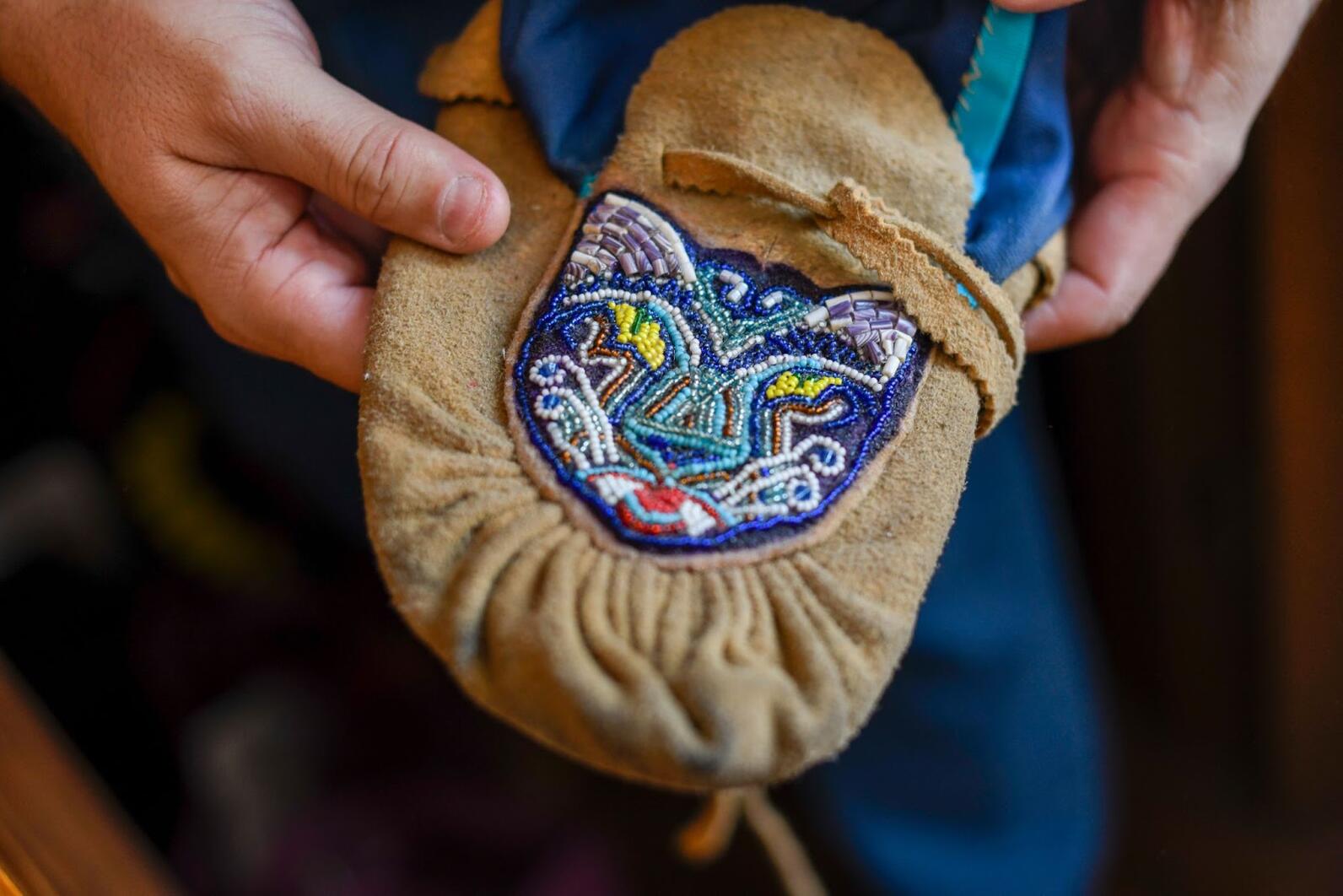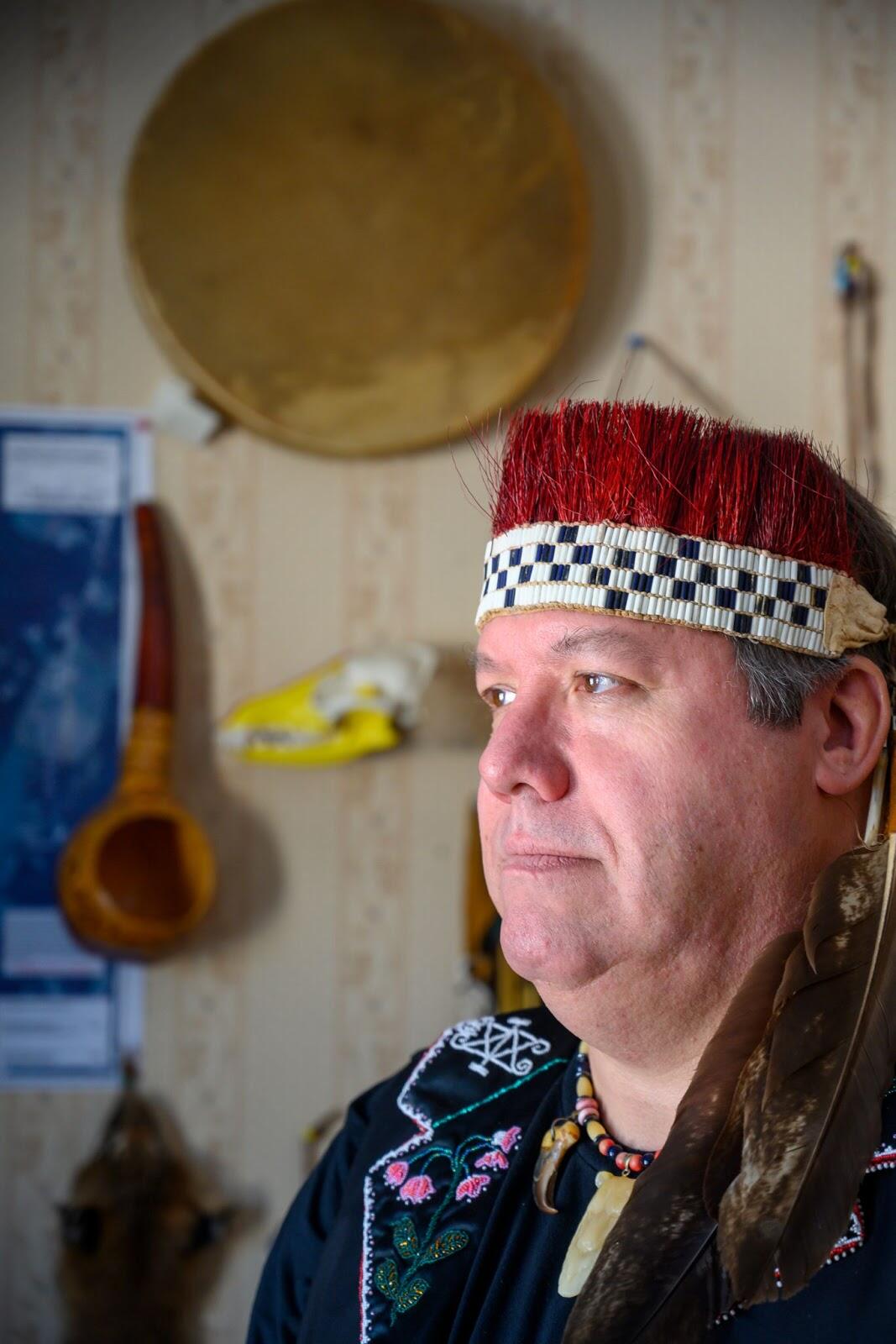About the author: Alexander is a citizen of the Nulhegan Band of the Coosuk Abenaki Nation. He is a recent graduate of Dartmouth College where he studied Environmental Studies with a focus in Native American Studies. He is particularly interested in the different ways in which communities relate to and depend upon natural resources, an interest which developed during time spent fishing and hunting with his grandfather, as well as working with dairy farmers across the northern part of the state for the U.S.D.A. 's Natural Resources Conservation Service.
Today, many know that the colonization myths taught in schools don't accurately depict the story of how the Americas were violently “settled.” As the trope goes - In 1492, Christopher Columbus sailed the ocean blue, to a so-called “New World.” In reality, Columbus had arrived on a continent inhabited by millions of indigenous people, with vast civilizations, complex government systems (some of which the European “Founding Fathers” drew inspiration from in drafting the U.S. Constitution), hundreds of Indigenous languages and a local history spanning tens of thousands of years.
Residing in villages, cities, bands, and confederacies, traditional territories spanned the length of the entire North and South American continents, and yet a combination of slavery, introduced disease, forced displacement, broken treaties and violent persecution by European settlers led to significant reductions in both the number of Indigenous peoples and size of their homelands over the last 500 years. (In fact, a new genetic study has confirmed that the number of Native Americans quickly shrank by roughly half following European contact about 500 years ago, due to a wave of disease, warfare and enslavement.)

Despite widespread violence perpetrated against them, Indigenous people and communities are alive and well today, yet many of us remain unable to name the specific tribe or nation whose land we live on. In countries with large indigenous communities - from Australia to Canada (and yes, even here in Vermont!) - it’s becoming harder not to be aware, and this is in part thanks to the broader adoption of so called “land (or territorial) acknowledgements” - formal statements paying tribute to the original inhabitants of the area. Here at Audubon Vermont, we are working with local Abenaki Tribes to craft our own version of a land acknowledgment to be recited at the start of public programs, educational events, as well as to feature at the start of our upcoming online welcome guide to the lands upon which the Green Mountain Audubon Center currently resides. As we take this first step towards recognizing the long and continued presence of Vermont’s Indigenous peoples on the lands Audubon helps to conserve, I feel it is critically important to answer misconceptions about what a “land acknowledgment” is, what purposes land acknowledgments serve, and to clarify how going beyond reciting land acknowledgements is essential in building meaningful relationships with Indigenous peoples.
First and foremost, what is a land acknowledgment?
A Land Acknowledgment is a formal statement (typically recited at the start of a group meeting, speech, or other public events) recognizing and respecting Indigenous Peoples as traditional stewards of the surrounding land and the enduring relationship that exists between Indigenous Peoples and their traditional territories. In countries with histories of settler colonialism, the practice of reciting land acknowledgments has become increasingly commonplace during events and gatherings. Many cultural and educational institutions in the United States have adopted this custom in the past 10 years, from Middlebury College here in Vermont to the National Museum of the American Indian in Washington D.C.. An acknowledgment can be very short, such as - “This event is taking place on traditional Abenaki land” - or may take a longer and more detailed form, such as: “We are gathered here today on the occupied territory of the Elnu Band of the Western Abenaki people, who have stewarded this land for generations....”
Another question that frequently comes up is “Why do we call such statements “land acknowledgments” and not “Indigenous people acknowledgments?” By recognizing “the land” in which you now learn, work, explore, and/or reside in, you also recognize the long existence of Indigenous communities and their traditional (and continued) ties to the area. The act of recognizing land can be viewed as expressing gratitude and appreciation to those whose territory and homelands you reside upon, but the process also implies reflecting on the long (and often ugly) history that has brought you to reside in the area. Thus, by acknowledging the land, we seek not only to express our appreciation for the space, but to understand our place within that region’s history. On this note, it’s critical that land acknowledgments reflect not only on the past: colonialism is a current, ongoing process impacting our relationships to the outdoors and spaces, and as such we need to examine how we currently work, learn, live and/or recreate on the land.
Another reason acknowledgments refer to land and not “Indigenous people” is because, as Mary Lyons (Leech Lake Band of Ojibwe) writes, “When we talk about land, land is part of who we are. It’s a mixture of our blood, our past, our current, and our future. We carry our ancestors in us, and they’re around us. As you all do.” Indeed, the concepts of “land” and “place” are uniquely tied to Indigenous identities; so much so that settlers seeking to “exterminate” Indigenous identities actively removed Indigenous communities from their traditional lands. The violent history of land dispossession that Indigenous peoples have faced, in addition to the fact that Indigenous identities are often intricately tied with land, makes the term “land acknowledgment” highly fitting to frame conversations about Indigenous-non-Indigenous relations.
What’s the purpose of a land acknowledgment?
At this point - you may be asking yourself - why the growing interest in acknowledging original inhabitants of the local land? It’s a good question to ask, especially since many of us have or will experience land acknowledgments in our lifetimes but rarely pause to consider what their intended purpose is. On this note, here are four ways land acknowledgments can be beneficial when delivered with the proper intent (*NOTE: make sure to continue reading to learn why land acknowledgments aren’t a final “solution” to repairing relations with Indigenous communities):
(1) Land acknowledgments highlight the names of the traditional inhabitants
Most land acknowledgments begin with some iteration of the following phrase: “We would like to acknowledge that the land we [live, work, learn, and commune] on is the original homelands of the [insert Tribal name here] people.” By opening the statement in such a manner, land acknowledgments expose community members —many for the first time—to the names of the traditional Indigenous inhabitants of the lands they are on. By directly calling these communities by name, acknowledgments help fight the erasure of Indigenous communities from local historical narratives and misconceptions about a colonial past devoid of pre-European peoples.
(2) Land acknowledgments emphasize continued Indigenous presence
Today, many land acknowledgments include references to the continued stewardship of lands by Indigenous peoples through phrases such as “continued relationships” and/or the use of present tense verbs when describing Native communities. Although this seems like a minute detail, present tense wording is significant in that it seeks to combat colonial narratives and misconceptions that Indigenous people were “exterminated” as European colonists moved in and/or that Indigenous cultures and identities cannot exist within “modern” society. By asserting that Indigenous community members are active agents on the land today, we remind ourselves that these communities survived forced assimilation and other acts of violence and are adaptable and shaping modern society.
The fact that land acknowledgments aren’t written solely in past tense also serves to reminds us that colonialism is a current and ongoing process, and not just a bygone period of expansion and exploitation covered in history textbooks. By situating colonialism in the present, land acknowledgments can help us to be mindful of our current participation in the colonial process.
(3) Land acknowledgments tell a more truthful historical narrative
Many acknowledgments nod to the process by which Indigenous communities have lost access to their traditional lands, either by referring to the land as “unceded territory” or directly mentioning forced displacement and broken treaties (official agreements signed between the U.S. government and sovereign Tribal Nations). By calling out the fact that the land was not “given up” or (as is the case in many areas) was unlawfully taken into possession by European governments, an acknowledgment helps to better situate the complex relationship that exists between Indigenous and non-Indigenous communities on the land.
(4) Land acknowledgments discomfit folks in attendance (and that’s a good thing!)
Another purpose of land acknowledgments (related to emphasizing continued Indigenous presence and the violent process by which Indigenous lands were taken) is to make people vividly aware of their place in the region’s turbulent history. As Chelsea Vowel, a Métis author, writes in Beyond Territorial Acknowledgements, “If we think of territorial acknowledgments as sites of potential disruption, they can be transformative acts that to some extent undo Indigenous erasure. I believe this is true as long as these acknowledgments discomfit both those speaking and hearing the words. The fact of Indigenous presence should force non-Indigenous peoples to confront their own place on these lands.”
As Vowel remarks, the fact that some people find land acknowledgments to feel “awkward” isn’t necessarily a bad sign, since it means folks are being prompted to confront their own relationship to settler colonialism, which is a challenging topic to process. These moments of self-reflection, however brief they may be, are critical toward starting more meaningful conversations about how we live in and steward Indigenous lands. As the saying goes, you first need to recognize a problem - in this case our discomfort with how we relate to Indigenous lands and uphold colonial systems of oppression - before you can go about “fixing” it!

Moving beyond land acknowledgments
While a land acknowledgment is an essential starting point to framing conversations about systemic racism and injustice, we have already witnessed how such acknowledgments can become stripped of their impact through formulaic repetition. Land acknowledgments should not be viewed as completing a task simply because it is “part of the process” or seen as the “proper” thing to do; but rather as a disruptive act - a time to encourage critical reflection and meaningful dialogue about some frankly challenging topics. Building off of this, those stating land acknowledgments should not stop at informing the public that Indigenous peoples exist, and that the U.S. has a history of colonialism. Instead, audiences should be encouraged to pause, discuss, and critically examine how organizations (including Audubon) can better cultivate meaningful relationships with Indigenous communities. There is a tremendous amount of work ahead of us as entire communities begin coming to terms with the legacies and trauma of Indigenous dispossession and settler colonialism, and land acknowledgments are just the beginning!
On this note, acknowledgments should leave organizations asking themselves questions like, “How am I (learning from/ working with/ supporting/ listening to) Indigenous peoples?” or stated alternatively, “Am I (as a member of this group/community/organization) doing enough?” As Chelsea Vowel (Métis from Lac Ste. Anne, Alberta) writes, “Moving beyond territorial acknowledgments means asking hard questions about what needs to be done once we’re ‘aware of Indigenous presence’. It requires that we remain uncomfortable, and it means making concrete, disruptive changes. How can you be in good relationships with Indigenous peoples, with non-human beings, with the land and water? No ideas? Well, it’s a good thing Indigenous peoples are still here because our legal orders address all of those questions. So why aren’t you asking us?”....
___________________________________________________________________________________________
In an effort to establish meaningful connections with Vermont’s Indigenous communities, Audubon Vermont has begun pursuing initiatives to create deeper engagement with local *Abenaki Tribes. These initiatives include:
-
Ceremonial and other use of Green Mountain Audubon Center lands by local Indigenous citizens
-
Teaching about traditional Abenaki food traditions at the Center’s maple sugarhouse
-
Highlighting **Western Abenaki plant names and traditional stories through our soon-to-be-launched Green Mountain Audubon Center virtual StoryMap guide
-
Incorporating books - written by Abenaki authors - into our growing educational library
*For context: The Abenaki (also called the Abnaki, Abinaki, or Alnôbak depending on where you are located) are a group of Native American Algonquian-speaking peoples that lived- and continue to reside - in a region called Wabanahkik (pronounced “wah-bah-NAH-keek” - this translates to "the land of the dawn"), a territory now encompassing parts of Quebec and the Maritimes of Canada as well as northern sections of New England including Vermont, New Hampshire, and upstate New York. The Abenaki people became part of the Wabanaki Confederacy in the eighteenth century, involving Abenaki, Passamaquoddy, Malecite, and Micmac communities.
**For context: As Abenaki linguist Jesse Bruchac explains of the Western Abenaki language, “Western Abenaki is an amalgamation really of all the New England native languages from Massachusetts up into Maine, NH, VT, and parts of NY… as people were displaced over about a 200 year period communities would come together and different parts of the languages coalesced and created what we have today… it’s still a spoken language and passed down from one generation to the next. Very few people still speak it and there are now several dialects.”
Audubon Vermont has also worked with local tribes and leaders in the creation of its new land acknowledgments, which are featured below:
Audubon Vermont Land Acknowledgement for use at designated events:
We pause to acknowledge and reflect upon the fact that the Green Mountain Audubon Center, located in present-day Huntington, Vermont, sits on land which has served as a site of sustenance, community, meeting, and exchange among Indigenous peoples since time immemorial. The Western Abenaki [A-ben-A-kee] are the traditional stewards of these forests, lands, and waters, which they call Ndakinna [in-DAH-kee-NAH], or “homeland.” We respect their spiritual and lived connections to this region and remember the hardships they’ve endured - both past and present, including violence and forced displacement at the hands of colonizing peoples.
Let us take a moment of silence to pay respect to the Abenaki people and to the indigenous inhabitants of these lands...
We give thanks for the opportunity to share in the joys of this place and to protect it. We welcome all opportunities for Abenaki citizens and other Indigenous people to connect with their relations - including water, soil, plants, and animals - across Green Mountain Audubon Center grounds.
Audubon Vermont Land Acknowledgement for written documents/webinars/presentations:
The Green Mountain Audubon Center sits on land which has served as a site of sustenance, community, meeting and exchange among Indigenous peoples since time immemorial. The Western Abenaki are the traditional stewards of these forests, lands, and waters, which they call Ndakinna, or “homeland.” We respect their connection to this region and remember the violence they have endured at the hands of white supremacy and colonialism. We give thanks for the opportunity to share in this place and to protect it.
Further resources:
If the idea of land acknowledgment is new and unfamiliar to you, this guide and this article are helpful starting points if you are interested in crafting a statement for your own organization. We also encourage you to visit the U.S. Department of Arts and Culture webpage to learn more about honoring Native land through acknowledgments both during in-person and digital events. Additionally, the Native Governance Center has put together a helpful list of tips for creating an Indigenous land acknowledgment statement, including how to begin the process with self-reflection.
Don’t know whose traditional lands you are residing upon? No worries! You can simply text your zip code or your city and state of residence (separated by a comma) to 1-855-917-5263 (see a screenshot of what this process looks like below) and an SMS bot (developed by Code for Anchorage with information provided by the Canadian nonprofit Native Land) will respond by sending you the names of the Native lands that correspond to that region! It’s as simple as that. You can also head to Native Land’s website to view an interactive map detailing the traditional lands of Indigenous communities across the Americas.
Overall, acknowledgments can be a simple, yet powerful step toward correcting historical narratives and practices that erase Indigenous people’s history and culture, toward a state of honoring the truth. As statements acknowledging Indigenous peoples and their connection to land become increasingly commonplace, it’s important to remind ourselves of our intent and purpose in saying acknowledgments so the words don’t become emptied of meaning. While you establish land acknowledgment as a practice, it’s important to ask yourself “ How can I engage with Native communities today, and how can I listen to their stories?” After all, we are still here.
Wliwni Creator for your gifts, and wliwni to our elders who have survived war, forced cultural assimilation, and displacement - among other acts of violence - to pass on your memories and culture through to current generations. I would also like to thank my grandfather, for teaching me to respect the land and to take pride in our Abenaki heritage. - Alexander Cotnoir




